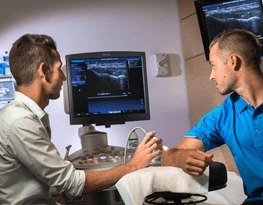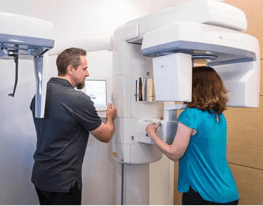What is an Epidural?

An Epidural is injection of cortisone and local anaesthetic to a specific area of the epidural space, to relieve pain and inflamation. Envision uses CT Technology to guide the Epidural injections, which are used to treat back and leg pain.
Epidural
What happens during an Epidural?
A. Before your procedure
What to bring
- Your request form
- Any relevant previous imaging
- Your Medicare card and any concession cards
Preparation – In the week before your procedure
You must advise us of any blood-thinning medication your are taking such as Aspirin, Warfarin, Plavix or Iscover and stop taking it for a period of time before your treatment. Please contact us or your referring doctor for advice.
Preparation – On the day of the procedure
You will be asked to fill out a questionnaire regarding your health status, medication, and any known allergies. If there is any chance you may be pregnant, please inform us before your scan. You may also be asked to change into a gown and remove some jewellery for your scan.
B. During your Epidural
Procedure
When you are transferred to the CT room you will be made comfortable on the examination table. The examination table slides you into the centre of the CT machine and some preliminary pictures are taken to confirm the scan position and the area of needle entry marked on your skin.
Your skin will then be cleaned and a local anaesthetic will be injected into site. This may temporary sting until the skin becomes numb (up to 30 seconds).
The radiologist will then insert a fine needle through the skin and tissues guided by images on the CT scanner, until it is in the correct area. Gas or contrast (x-ray dye) is then injected to confirm the correct depth of the needle. Once confirmed, a mixture of cortisone and local anaesthetic is injected. You may feel a sensation of pressure or a burning sensation within your back or leg.
Your scan will take about 30 minutes.
Risks and side effects
Low Dose CT is a very low risk procedure – find out about CT Risks and Side Effects. Other risks associated with this procedure include:
- The Epidural injection may cause numbness in your leg which can last up to a few hours.
- Pain or discomfort at the needle insertion site, or bruising after the procedure.
- Temporary numbness or a tingling sensation can sometimes occur. Injection into the spinal cord (thecal) sac is extremely rare as X-ray dye or air is used to confirm correct needle placement, however, temporary loss of nerve function due to local anaesthetic, or scarring (arachnoiditis) may occur. If the sac containing the spinal nerve roots is punctured during the needle placement, fluid may leak out over time resulting in a headache. The risk of headaches is about 5% after sac puncture.
- Infection is rare but may involve redness or swelling and increased back pain, usually after 48 hours. Superficial infection is the most common form and responds rapidly to antibiotics; deep infection is extremely rare, but can be severe and associated with pressure on the spinal nerves that may require surgery. Increasing back or neck pain needs to be promptly reported to us and your referring doctor.
Any medical procedure can potentially be associated with unpredictable risks.
Who will perform my Epidural?
Our specialist medical imaging team will perform your Epidural.
Epidural
What happens after an Epidural?
How do I get my results?
After your appointment, the information from your scan is processed and interpreted by Envision’s medical imaging team before delivery of a report to your doctor.
Post-procedural information
At the end of the procedure the needle will be withdrawn carefully from the insertion point and a band aid applied. The local anaesthetic may cause numbness in your leg which can last for up to a few hours. Staff will monitor you after the injection and you will be OK to leave once normal sensation/movement returns. Pain relief can take a few days to occur so you may need to continue with your current medication for a short time.
You should arrange for someone to drive you home after your procedure.
The contrast dye will be flushed naturally by your body over the following 24 hours without you noticing it. You are free to eat and drink normally. We recommend you continue to drink plenty of fluids to assist your body in flushing the contrast. You may return to normal activities, although strenuous activity should be avoided.
Post-Procedural Information

Epidurial
Downloads
Medical Imaging Practice Perth
Types of Imaging
At Envision, we offer the most sought-after types of imaging for diagnostics and treatments. Our Wembley headquarters is the largest single-site radiology practice in Perth







